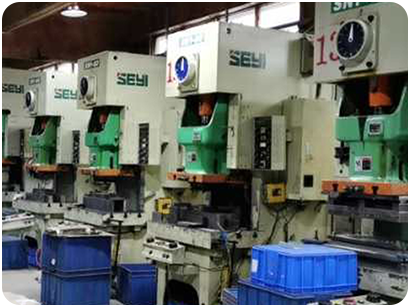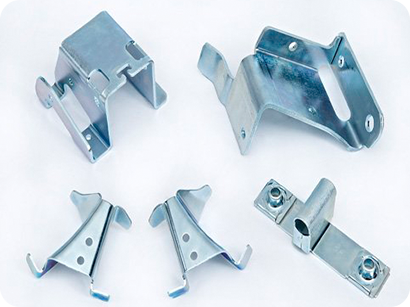Stamping & Bending & Punching Process


The basics of metal stamping
Metal stamping is a cold-forming process that makes use of dies and stamping presses to transform sheet metal into different shapes. Pieces of flat sheet metal, typically referred to as blanks, is fed into a sheet metal stamping press that uses a tool and die surface to form the metal into a new shape. Production facilities and metal fabricators offering stamping services will place the material to be stamped between die sections, where the use of pressure will shape and shear the material into the desired final shape for the product or component.
Metal stamping, also referred to as pressing, is a low-cost high-speed manufacturing process that can produce a high volume of identical metal components. Stamping operations are suitable for both short or long production runs, and be conducted with other metal forming operations, and may consist of one or more of a series of more specific processes or techniques, such as:
- Punching
- Coining
- Blanking
- Bending
- Embossing
- Flanging
Punching and blanking refer to the use of a die to cut the material into specific forms. In punching operations, a scrap piece of material is removed as the punch enters the die, effectively leaving a hole in the workpiece. Blanking, on the other hand, removes a workpiece from the primary material, making that removed component the desired workpiece or blank.
Stamping advantages and disadvantages
Some of the benefits of stamping include lower die costs, lower secondary costs, and a high level of automation compared to other processes. Metal stamping dies tend to be relatively less expensive to produce and maintain than those used in other common processes. The secondary costs, such as cleaning and plating, are also cheaper than similar treatments for other metal fabrication processes. Stamping machines are relatively easy to automate and can employ high-end computer-control programs that provide greater precision, faster production, and quicker turnaround times. The high level of automation also lowers the cost of labor.
Applications
Stamping is used in a variety of applications, especially those involving three-dimensional designs, lettering, or other surface engraving features. Such stamping products are commonly produced for home appliance manufacturers, automotive companies, the lighting industry, telecommunications services, military and defense, aerospace industries, medical equipment manufacturers, and electronics companies. Odds are you have a product in your home that has parts created through metal stamping because it is a process used in everything from your household appliances to your cars.
The specific products and components can range from simple stamping items, such as metal clips, springs, weights, washers, and brackets, to more complex designs, such as those found in engine bases or friction plates. This process is used for producing both parts for large machinery and also incredibly detailed small parts. Micro-precision stamping can create parts with diameters of up to 0.002 inches.
Electronic stamping is electronic components manufactured through the metal stamping process. They are used in a variety of industries, from home electronics and appliances to telecommunications and aerospace. Electronic stamping is available in a number of metals, including copper, copper alloys, aluminum, and steel, as well as more expensive metals, such as platinum and gold. Electronic components produced by the metal stamping method include terminals, contacts, lead frames, springs, and pins. They can be created from ferrous or nonferrous materials. Metal stamping find wide use in computers, electronic equipment, and medical devices. Because of the specialized shapes that can be made by the various stamping processes, many electronics are made by this cold forming process
